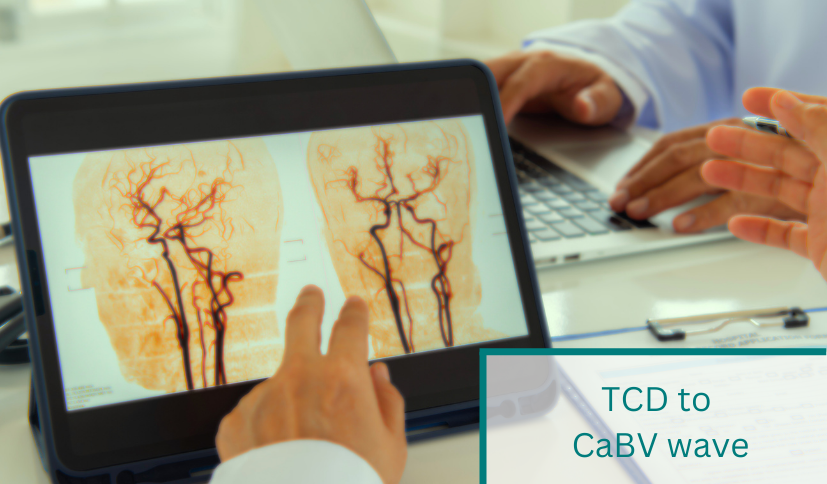
16 Apr. 2025 TCD to CaBV wave
Non-Invasive Compliance Monitoring with TCD and CaBV
A recent study introduces an innovative method that enhances the capabilities of transcranial Doppler (TCD) sonography. By transforming traditional Doppler blood velocity signals into a cerebral arterial blood volume (CaBV) wave, this approach enables a non-invasive evaluation of intracranial compliance.
TCD-Based Innovation
Transcranial Doppler sonography has been widely used to measure blood flow velocities in the brain’s arteries. The novelty of the method lies in reinterpreting these Doppler signals: instead of only providing information on flow velocity, the signal is transformed into a CaBV wave, which quantifies the arterial blood volume distribution within the brain. This shift in focus allows for the detection of delays in blood spread and changes in vascular resistance related to impaired intracranial compliance.
Methodological Insights
Signal Transformation:
The methodology converts the Doppler blood velocity wave into a volume-based representation. This conversion facilitates a detailed analysis of how blood volume is distributed throughout the brain over time, offering new insights beyond traditional TCD measurements.
Validation with Invasive Measures:
The study validates the non-invasive CaBV approach by comparing it with invasive intraventricular intracranial pressure (ICP) measurements. A high Spearman correlation between the CaBV data and invasive ICP data confirms the reliability of the method, highlighting its potential for monitoring subtle changes in intracranial dynamics.
Clinical Relevance
Safe Monitoring: Patients, especially those for whom invasive methods are risky, can be continuously and safely monitored.
Early Detection: The method provides early indicators of changes in blood distribution that signal impaired compliance, potentially allowing for timely clinical intervention.
Pathophysiological Insights: Understanding alterations in blood volume dynamics may contribute to more refined diagnostic strategies and personalized treatment approaches.
Conclusion
The innovative transformation of TCD Doppler signals into a CaBV wave represents a promising advance in non-invasive intracranial monitoring. By providing detailed insights into blood volume distribution and its relationship with intracranial compliance, this method may enhance the understanding and management of conditions associated with elevated intracranial pressure.
Brasil, S., Ben-Hur, I., Cardim, D. et al. Validation of a Noninvasive Approach for Cerebrospinal Compliance Monitoring. Neurocrit Care (2025). https://doi.org/10.1007/s12028-024-02205-w
